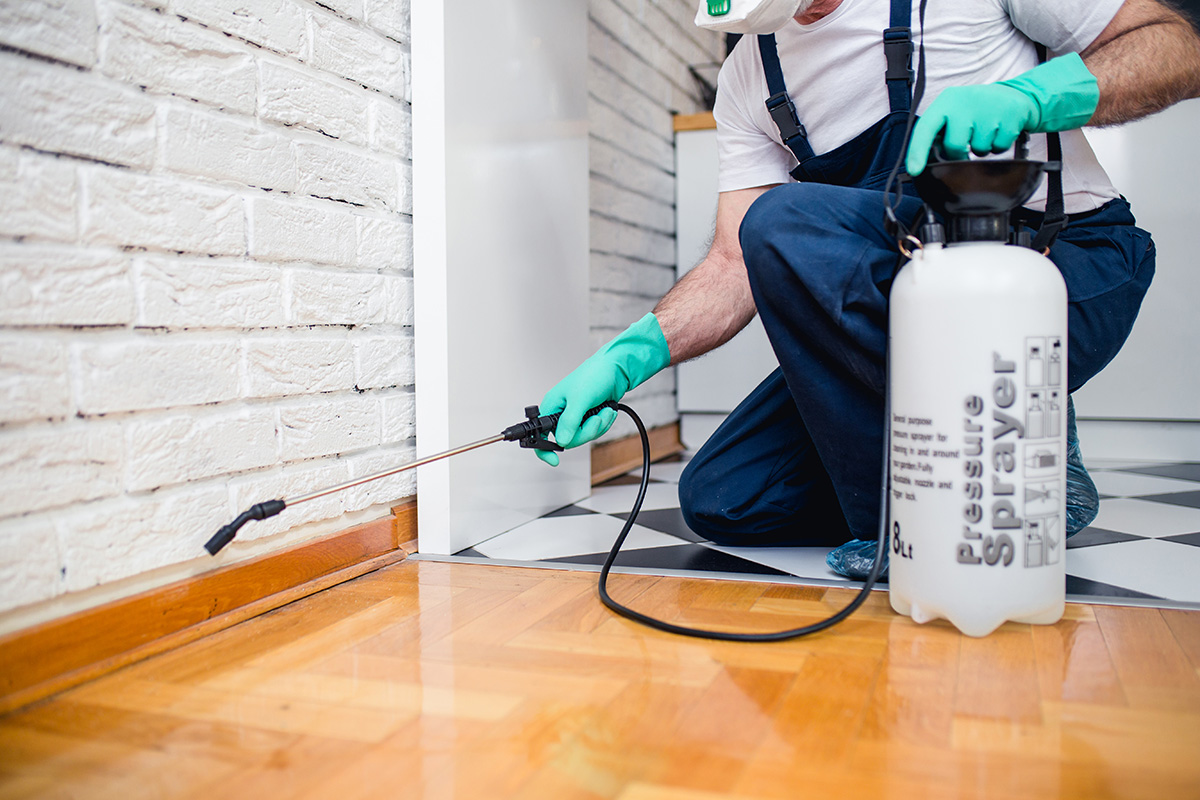Bed Pest Treatment Failure: Contrasting Chemical Vs. Non-Chemical Solutions
In the realm of insect control, specifically when handling the consistent concern of bed pests, the choice in between chemical and non-chemical therapy solutions can be a pivotal one. Both methods use distinctive advantages and drawbacks, influencing elements such as performance, safety factors to consider, and overall expense. By examining the nuanced details of each technique, a clearer understanding of which path to pursue in dealing with a bed insect invasion can be obtained.
Effectiveness of Chemical Therapies
Chemical therapies for bed insect invasions have been extensively identified for their powerful and fast effectiveness in removing these bugs. When taking into consideration the performance of chemical treatments, it is important to comprehend that they can offer a quick and complete service to a bed bug trouble. Specialist pest control experts commonly rely upon insecticides to target bed bugs at numerous stages of their life cycle, consisting of eggs, grownups, and fairies. These chemicals generally function by interrupting the bed bugs' nerves, bring about paralysis and ultimate death.
Moreover, chemical treatments have the benefit of offering recurring effects, suggesting that they can continue to get rid of bed bugs also after the preliminary application. This residual activity is especially helpful in combating any prospective re-infestations. In addition, the rapid activity of chemical therapies can bring alleviation to individuals dealing with extreme bed insect problems, enabling them to regain control of their space swiftly.
Safety Interest In Chemical Solutions
One vital element that calls for careful consideration when using chemical solutions for bed pest therapy is making certain the safety and security of passengers and the environment. Exposure to certain chemicals made use of in bed insect therapies can lead to respiratory problems, skin irritation, or various other unfavorable responses, especially in individuals with pre-existing problems or sensitivities.
Additionally, the environmental effect of chemical remedies is one more substantial consideration. Some pesticides made use of in bed bug treatments may be unsafe to valuable insects, wild animals, and environments if they seep right into the soil or water supply. It is necessary to use chemical treatments carefully, adhering to safety guidelines, and taking into consideration much less toxic alternatives to reduce these threats and ensure the reliable and safe administration of bed insect problems.
Benefits of Non-Chemical Methods
Taking into consideration the prospective safety worries and environmental impact associated with chemical options for bed bug therapy, discovering non-chemical strategies provides a promising option with several unique benefits. Non-chemical therapies are ecologically pleasant, as they do not contribute to air or water contamination, making them a sustainable option for pest control.
In addition, non-chemical remedies can be effective in targeting bed bugs, consisting of hard-to-reach locations where chemical treatments may not penetrate - A1 bed bug exterminator charlotte. Methods such as warm therapy, vacuuming, heavy steam cleaning, and cushion coverings give extensive elimination without the usage of harmful chemicals.
Limitations of Non-Chemical Treatments

Furthermore, non-chemical treatments commonly require multiple applications to attain effective eradication. This can be lengthy and may not constantly ensure total elimination of all bed bugs and their eggs, especially in hard-to-reach or covert places.
Furthermore, the success of non-chemical therapies greatly counts on correct execution and thoroughness, which can be testing for people without professional proficiency. Insufficient application of non-chemical techniques might cause insufficient eradication, resulting in persistent infestations and the demand for added therapies.
Therefore, while non-chemical therapies have their advantages, it is important to recognize these restrictions article source and consider them when figuring out one of the most efficient technique for handling bed pest problems.
Price Contrast: Chemical Vs. Non-Chemical Options
Provided the limitations related to non-chemical treatments, a necessary element to assess in the context of bed bug monitoring is the expense comparison in between chemical and non-chemical options. Chemical therapies typically involve the application of insecticides by specialists, which can range from $250 to $900 per room, depending on the severity of the infestation and the dimension of the area to be treated. On the other hand, non-chemical therapies like warm treatment or vapor can be a lot more expensive, with prices varying from $1,000 to $6,000 for an entire home. While the initial price of chemical treatments might seem reduced, several treatments might be required to totally eradicate the problem, potentially raising the general price. On the various other hand, non-chemical alternatives may give a much more sustainable and environment-friendly service, although they can be cost-prohibitive for some people. Inevitably, when considering the price of bed bug therapy options, it is necessary to evaluate the in advance expenditures against the performance and long-term sustainability of the selected approach.
Verdict

Considering the prospective safety and security problems and environmental their explanation influence linked with chemical solutions for bed insect treatment, checking out non-chemical strategies offers a promising alternative with a number of distinct benefits.Provided the restrictions connected with non-chemical therapies, an essential element to review in the context of bed pest management is the cost comparison between chemical and non-chemical choices. In comparison, non-chemical therapies like warmth therapy or vapor can be extra expensive, with costs ranging from $1,000 to $6,000 for an entire home. While resource the initial cost of chemical therapies may appear reduced, multiple therapies might be called for to fully eliminate the infestation, potentially increasing the total price.In conclusion, when contrasting chemical and non-chemical bed pest therapy choices, it is crucial to take into consideration effectiveness, safety and security, advantages, restrictions, and expense.